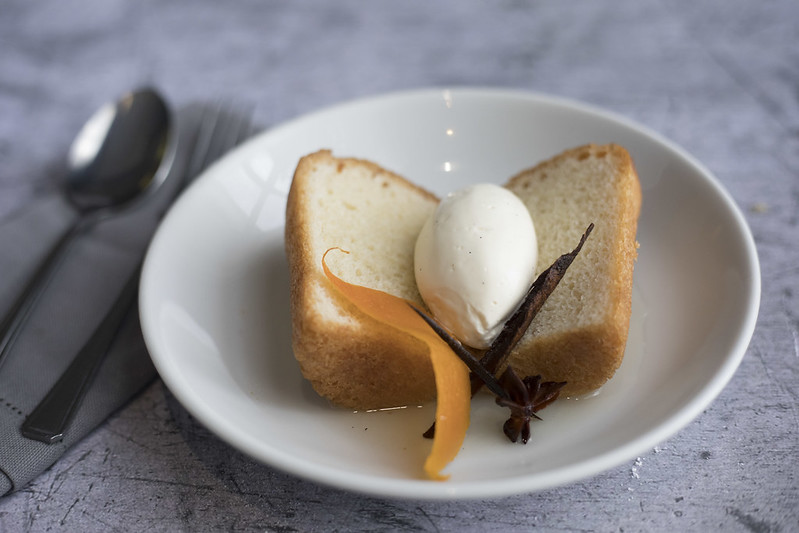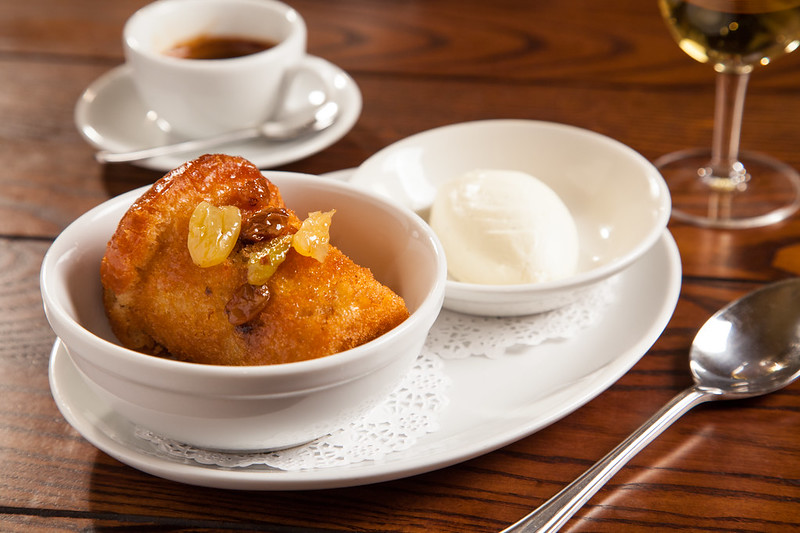
Rum baba is a staple of French pastry, invented in the 18th century by the King of Poland Stanislas Leszczynski. Settled in Nancy, in Lorraine, he loved to taste the local kougelhopf, which reminded him of baba (or "babka", which means "granny"), a traditional Polish cake. One day, he found his kougelhopf too dry, and decided to wash it down with Tokay, a Hungarian sweet wine that could be compared to Sauternes. A success!
His pastry chef at the time preserved and reproduced the recipe, adapting it in particular with Madeira or Malaga wine, diluted with tansy liqueur (a plant with a bitter and camphorous taste). Later, Nicolas Stohrer , a descendant of the king's pastry chef, developed it in his Parisian pastry shop on rue Montorgueil. It was in the 19th century that a successor replaced the liqueur with rum. Pure rum was first added to natural sweet wine, then the wine and rum blend was replaced by a rum syrup. Beyond the French borders, the baba has also become an Italian specialty, where limoncello or grappa replace the rum.
There are several recipes and several forms of rum baba, but here is the one that I tested and approved!
The recipe
The material
To begin, you can use round baba or savarin molds, or small “cork” molds.
Then comes the most interesting step, choosing the rum! Don't hesitate to choose a very aromatic rum, because it will be diluted in the syrup. For my part, I find that the pastry profile of Guadeloupe rums is perfectly suitable, but it is not the only rum that I use in my recipe.
Let me explain: if I soak my baba with rum syrup, when tasting I don't hesitate to pour a small dash of pure rum on the cake to give it freshness and strength. At this stage, I turn instead to a Martinique rum, usually drier and woodier. I find that the balance between the two types of rum is perfect.
For my syrup, I like to use a Severin VSOP, a Montebello 3 years or a Reimonenq Vieux Première Cuvée (more woody). To then water the cake, I use a Saint James 7 years, a Dillon VSOP or a JM VSOP. Of course, there is nothing to prevent you from using more prestigious vintages, good ingredients make good recipes!
Although agricultural rum is traditionally preferred, lovers of fuller-bodied rums can also use a Hampden Gold for example for their syrup, then a nice Doorly's XO to water down the tasting. Anything goes! Finally, know that the cognac baba, or even better, the armagnac baba, are also worth a try.
The ingredients
For 8 people (one large savarin mold or 8 small round molds or stoppers)
For the dough:
1 sachet (10g) of baker's yeast, or 20g of fresh yeast
2 tablespoons of sugar
4 tablespoons of lukewarm water
250g flour
salt
4 eggs
125g butter
For the syrup:
50 cl of water
400 g sugar
1 vanilla pod
15 cl of rum
To serve:
Icing: 1 tablespoon of apricot jam diluted in 5cl of hot water
Vanilla Whipped Cream
A dash of rum
Method
Allow some time for this recipe, as the dough needs to rest and rise several times, and the cake needs to be well soaked.
Dissolve the yeast and caster sugar in lukewarm water and leave to stand for an hour.
Put the flour in a bowl, make a well and pour in the water/yeast/sugar mixture, adding a pinch of salt and 2 eggs. Mix well and knead the dough for a good 5 minutes.
Add 2 eggs and knead for another 5 minutes until the dough no longer sticks to the bowl. Leave to rest for an hour.
Remove the gas from the dough, and add the softened butter in small cubes, then knead again for 5 minutes.
Butter the mold(s) and pour the batter into them (small molds should be filled about 3/4 full)
Cover with a damp cloth and let sit for 2 hours.
In a hot oven at 200°C (fan-assisted), cook for around 25 minutes until golden brown on top.
Leave to cool without unmolding and prepare the syrup in the meantime:
Split and scrape the vanilla pod into the water and sugar, and bring to the boil. Let simmer for about twelve minutes.
Remove from heat and add rum.
Unmold the baba, place it in a dish and sprinkle it with all of the syrup. Leave to soak completely.
Prepare a glaze with the apricot jam and water, and brush the cake with it.
Garnish with whipped cream.
Before serving, cut a slice of cake (or cut the small babas in 2) and sprinkle with rum.
Enjoy your meal!
(Cover and illustration image rights reserved to Hotel du Vin & Bistro on Flickr)
